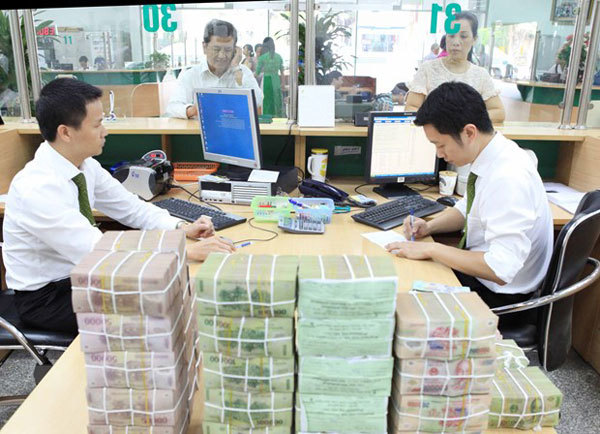 |
| Vietcombank's bad debts in the first three quarters of 2020 rose by 36 per cent compared to the beginning of the year to nearly VND7.88 trillion. VNA/VNS Photo |
Vietnam News Agency quoted a report from Viet Dragon Securities Co as saying that NPLs at 17 banks had jumped by 31 per cent at the end of the third quarter against the end of last year to VND97.28 trillion (US$4.19 billion). The amount accounted for 1.8 per cent of the banks’ total assets.
Specifically, Vietcombank's NPLs rose by 36 per cent compared to the beginning of the year to nearly VND7.88 trillion. Of which, sub-standard debts surged by 4.2 times to VND2.92 trillion, and doubtful debts grew by nearly three times. The ratio of NPLs over total outstanding loans increased from 0.79 per cent at the end of 2019 to 1.01 per cent.
VietinBank reported that NPLs had gone up 66 per cent to VND17.94 trillion, lifting the bank’s bad debt ratio from 1.16 per cent to 1.87 per cent.
TPBank had bad debt of 59 per cent at VND1.97 trillion, accounting for 1.79 per cent of its total outstanding loan balance.
Sacombank’s bad debts also edged up 19 per cent to nearly VND6.84 trillion.
ACB's bad debts at the end of September were VND2.48 trillion, up 71 per cent from the beginning of this year. ACB's ratio of NPLs over total outstanding loan balance also increased from 0.54 per cent to 0.84 per cent.
MBBank's bad debts rose by more than 39 per cent to VND4.03 trillion, causing the ratio of NPLs over total outstanding loan balance to increase from 1.16 per cent to 1.5 per cent.
Many small commercial banks have also seen their bad debts increasing sharply.
Kienlongbank’s bad debts jumped to VND2.24 trillion, 6.5 times higher compared to the beginning of this year, while debts at VietBank rose by 61 per cent to VND867 billion, dragging its bad debt ratio from 1.32 per cent to 2.03 per cent.
MSB's bad debts surged by 31 per cent to VND1.70 trillion, while LienVietPostBank had a total bad debt of VND2.61 trillion by the end of the third quarter of this year, up 29 per cent.
Can Van Luc, a member of the National Advisory Council on Financial and Monetary Policies, attributed the surge in bad debt to the impacts of the COVID-19 pandemic, which had caused a reduction in revenue making it difficult for borrowers to repay their loans.
If the pandemic continues to cause difficulties for enterprises, international trade, and services, bad debts of the banking system will probably increase in the coming time, Luc said.
Banking expert Nguyen Tri Hieu said the sharp increase in bad debts in the first nine months of this year was not surprising in the wake of the pandemic, and was a global issue.
Hieu noted the bad debt situation this year was clearly worse than that in 2019 and would continue to increase, so banks should be cautious. VNS

Banks need to be cautious of bad debts
The financial statements of the third quarter of this year of commercial banks showed that more than two-thirds of banks posted fairly high growth in their profits amid the context that the economy was still facing the Covid-19 pandemic.

Trillions of dong worth of debt settled each month, after resolution released
A daring decision has helped the financial market and the banking system to stand firmly during Covid-19.